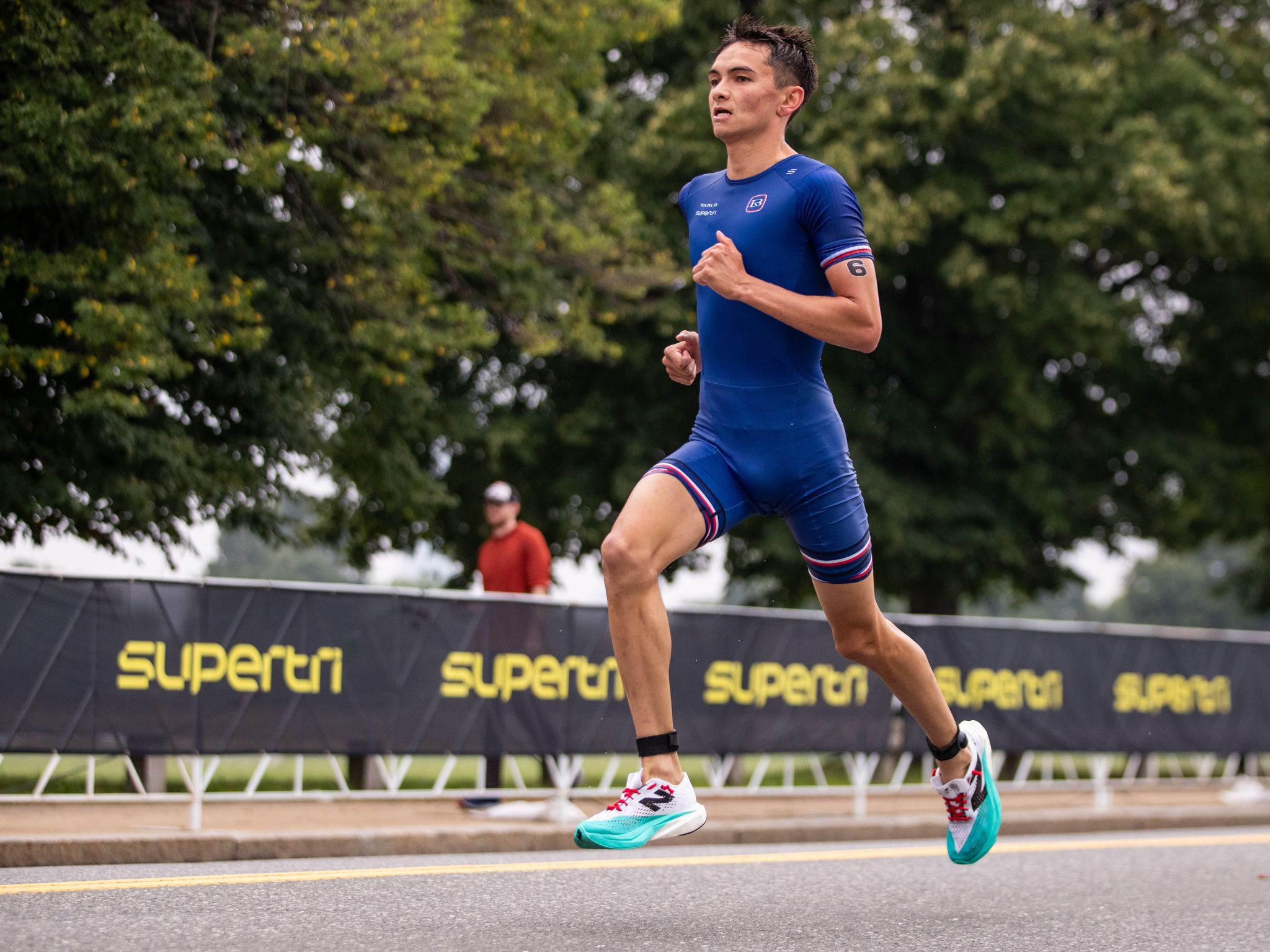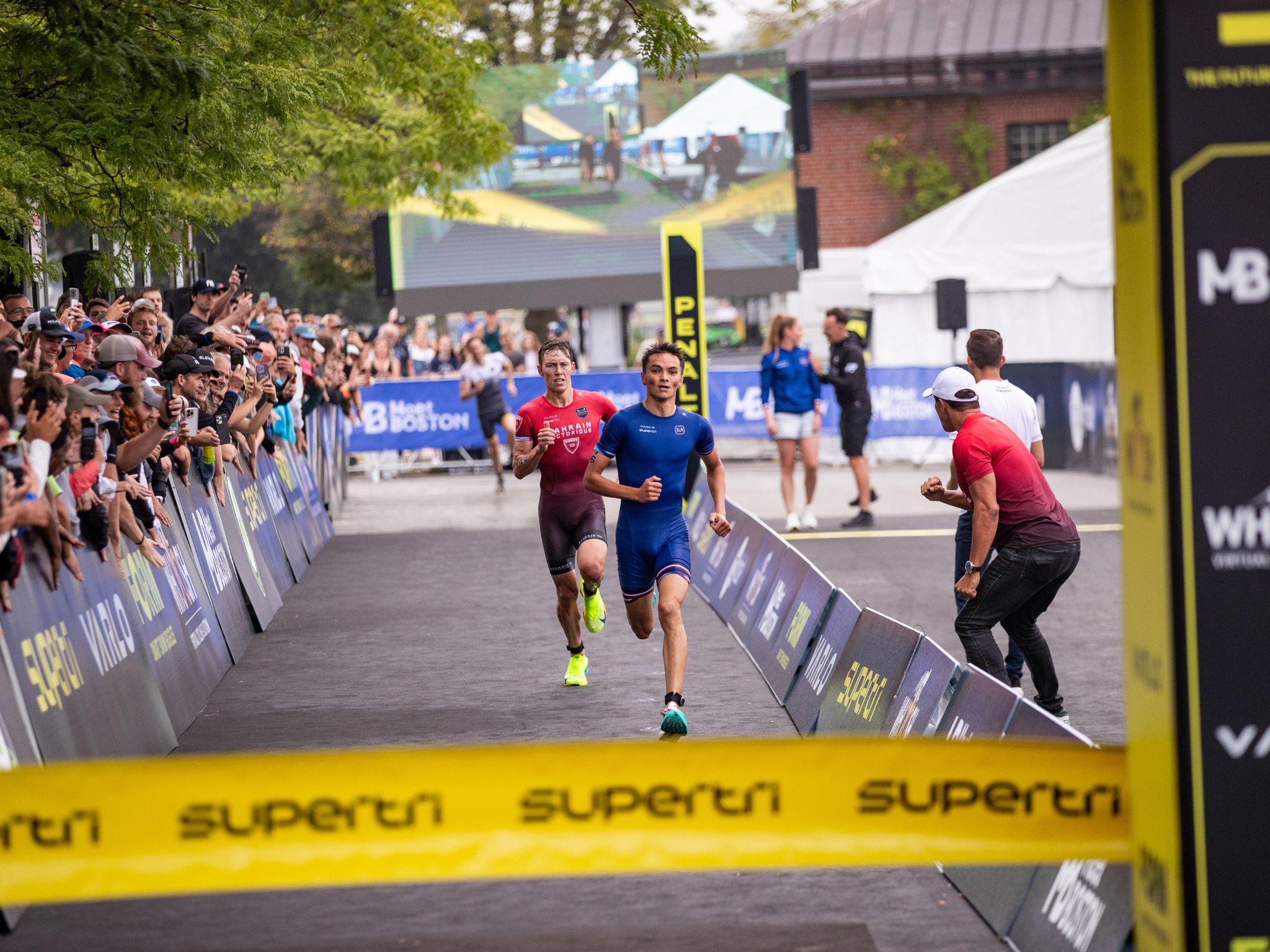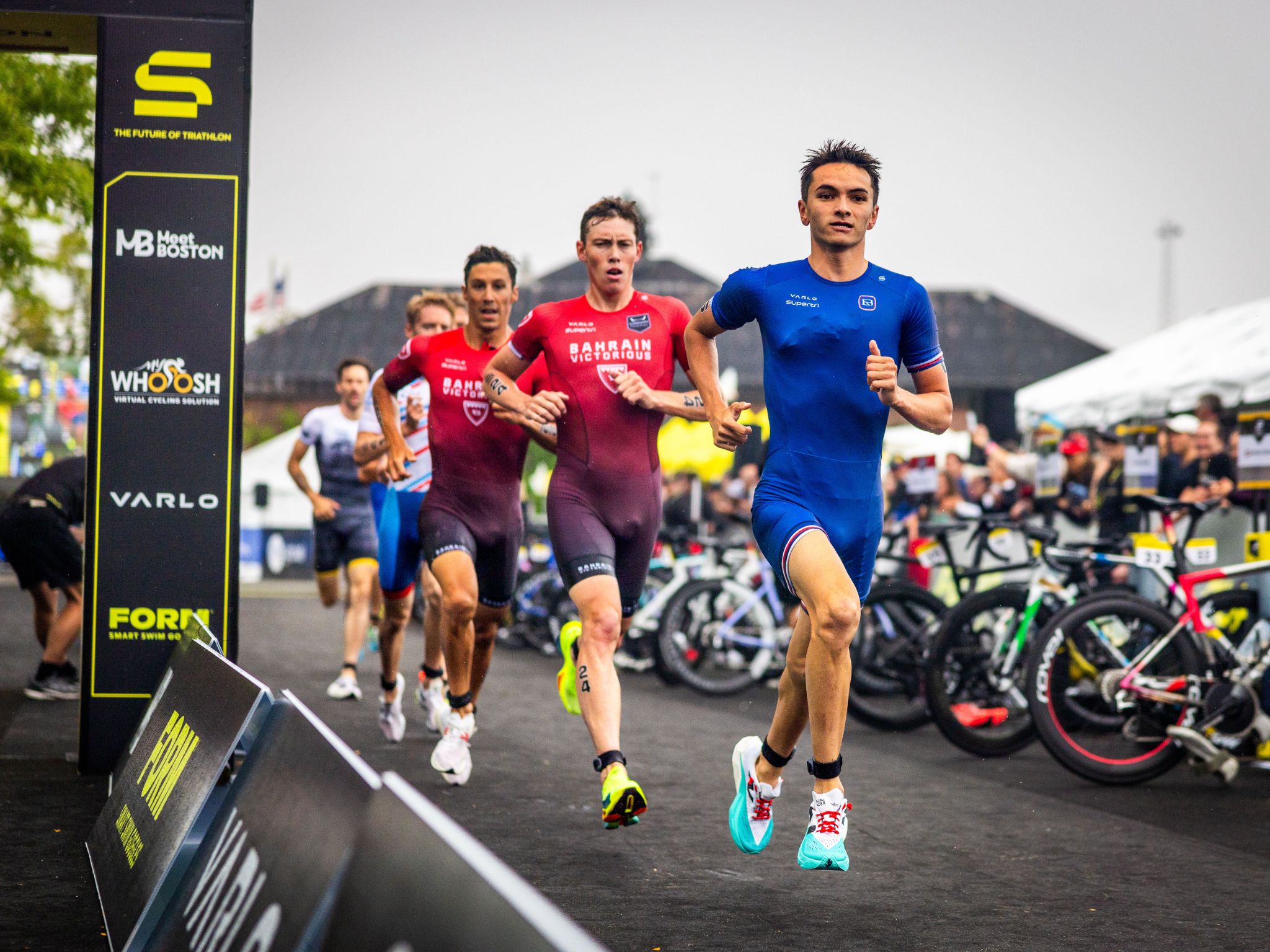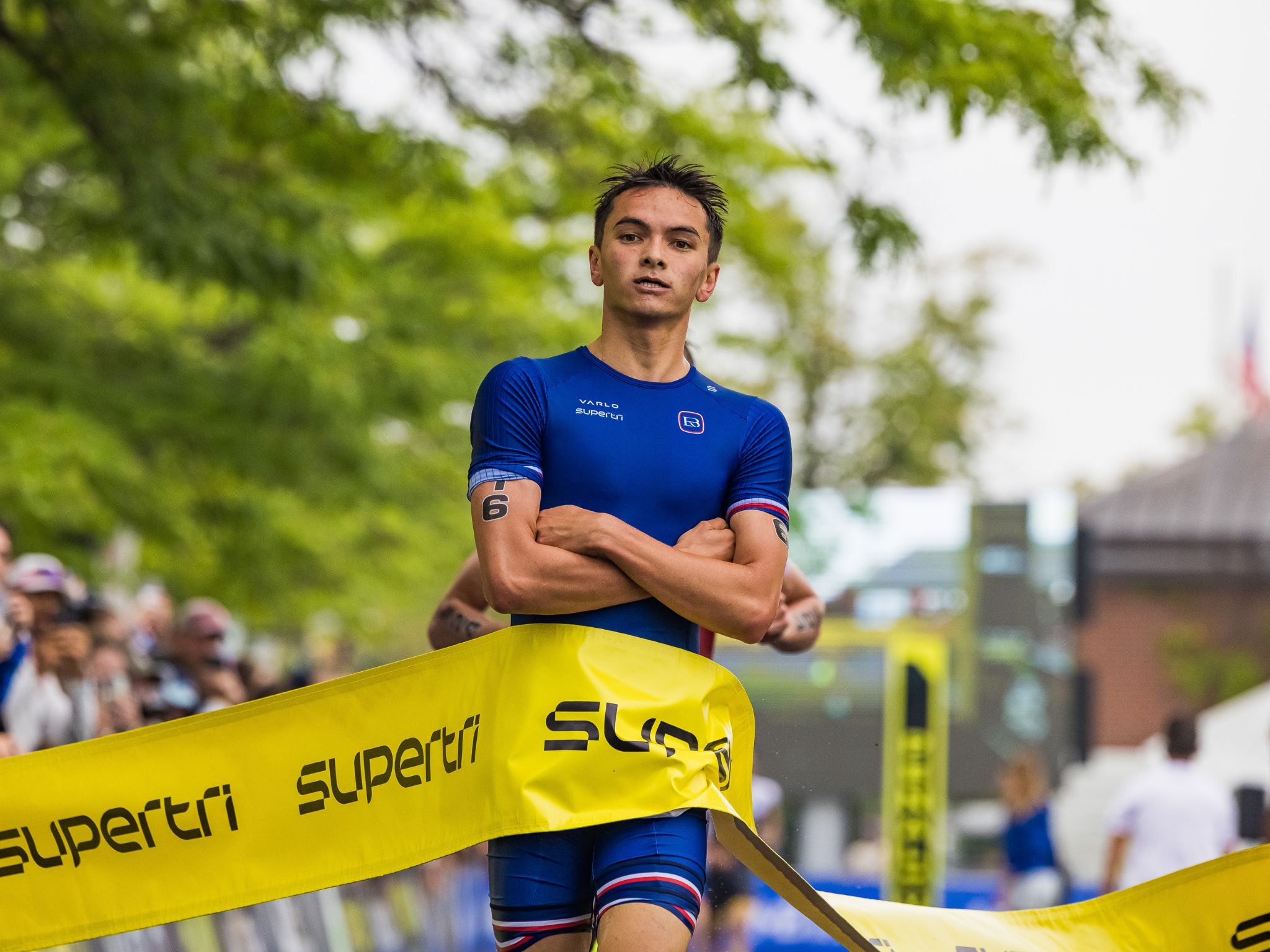The exact workout triathlete Alex Yee used to win Olympic gold
The superstar triathlon athlete shares the training techniques he used to develop elite-level fitness
Alex Yee’s sprint finish to claim triathlon gold was one of Team GB’s crowning moments at the Paris 2024 Olympics. But after sitting down with the Supertri athlete to find out more about his training, what we found even more impressive were the meticulous preparations behind his performance.
In the lead-up to the Games, his typical weekly routine contained two gym workouts, six swims, seven runs and five bike rides, covering somewhere in the region of 585km – just shy of the drive from London to Edinburgh.

In short: it’s no coincidence the 26-year-old is now the most decorated triathlete in Olympic history, with two golds, a silver and a bronze to his name after just his second Games.
In an interview with The Independent, he reveals some of the secrets to his success, and shares how readers can try some of his training techniques for themselves. Whether you’re a budding triathlete or a seasoned pro on the road, the bike and in the water, read on for the insider tips that will help take your routine to the next level, courtesy of the world’s best.

Not every session is done at full intensity
Yee follows a “polarised training programme”, varying the intensity of his sessions throughout the week to maximise positive adaptations and prevent burnout.
Out of five cycling sessions, he says three or more are usually “low, aerobic efforts at three watts per kilo and under, which is probably how most people would go out and ride their bikes on a weekend”. The same applies to his running regime, which tends to include two hard sessions per week alongside five easier efforts to boost his aerobic capacity and get miles in his legs.
“There would be a lot of sessions where I’m running with three or four other guys just having fun at a talking pace,” Yee says. “That’s what we’re doing most of the time.
“But then the [higher-intensity] sessions would be at LT2 [lactate threshold two] and above – something you can only do for an hour. That’s how we polarise things.”
According to an article by Loughborough University, “LT2 is the intensity that causes a rapid increase in blood lactate”. This is an indicator of biochemical processes like muscular fatigue setting in, making it hard to maintain this intensity for more than 40-60 minutes – that’s why it’s often linked to your 10K pace. So exceeding LT2 for a prolonged period is a one-way ticket to an incredibly challenging (read: uncomfortable) training session.
If you want an example of one of these higher-intensity sessions, try Yee’s “bread and butter” running workout for size. Although you might want to scale down Yee’s target pace of two minutes 52 seconds per kilometre.
Run | Recovery | Pace |
6 x 2km | 75-90 seconds | When completing this session at a flat pace, Yee aims to maintain just below his usual 10K pace (2min 47sec/km) throughout. Adjust accordingly to suit your fitness level. |
Attention to detail is paramount
Yee and his team left no stone unturned when preparing for the Paris 2024 Olympics. This included replicating race-day conditions as closely as possible in the run-up to the event.
“I went out and did a prep camp in a place called La Borne in Bordeaux before the Olympics,” he says. “There’s a river there with a current that’s exactly the same speed as the Seine was.
“For us to be able to experience that was critical for me in terms of both physical and mental preparation: feeling like I’ve been there and I’m actually ready to race in those conditions.”
He also changed his swimming technique to create a stroke that would be more effective in these conditions.
“Over the last 18 months, I stripped up my stroke because we knew that swimming in and against a current requires an ever so slightly different stroke,” Yee explains. “I started working with a British Swimming biomechanist and another team I had been working with before to reconstruct my stroke and make it so it would be effective with and against a current.”
For this, he needed to become stronger, which leads us to our next point.

Not all work was done on the bike, road or rivers
The Olympics show us that the word “athlete” doesn’t have a designated look. Instead, each athlete eats and trains to create a body capable of excelling at their chosen sport. For Yee, this means two 75-minute strength training sessions each week, with a focus on developing a robust lower body and strong back muscles for swimming.
“These sessions are partly for lower limb conditioning, so you can tolerate the mileage that you’re doing,” Yee explains. “A lot of that will be isometric work [where the muscles are under tension without moving, like in a wall sit], making sure you have the stiffness through your tendons, ligaments and calf muscles. The other part of it is a little bit of upper-body work.”
When changing his stroke to handle the forceful currents of the Paris 2024 Olympic triathlon course, Yee needed to build extra strength in his lats (the broad muscles across the back) and traps (which extend from the base of the neck, across the shoulders and down to the mid-back).
“Because we do a lot of open water swimming with a wetsuit, it means you actually put a lot more load [on your shoulder] because of the tightness of the wetsuit, so I needed to condition for that,” Yee says. It also allowed him to minimise his risk of injury while changing his stroke.
His strength training tends to include a mixture of free weight exercises and machine-based moves, as well as plenty of work on the Keiser Functional Trainer cable machine. If you want to try training like Yee in the gym, try using some of his go-to exercises such as lat pulldowns and the dumbbell I-Y-T exercise.
He also often does calf isometric holds on a leg press machine using the protocol below, loading the machine up with 140-150kg.
Exercise | Sets | Reps | How to do it |
Leg press calf isometric hold | 4 | 20-second hold | Place your feet on the bottom of the leg press machine’s platform so your forefoot and midfoot are planted on the platform and your heels are hanging over the edge. Press the platform away from you so your legs are almost extended, but your knees are still soft, then hold this position for 20 seconds. |
Enjoyment is key
The amount Yee trains each week is mind-boggling for most of us. Luckily, he has a secret weapon which helps him knuckle down: he genuinely loves the sport.
“The beauty of our sport is that it’s extremely social and you can share the experience with people,” he says. “If you enjoy running and cycling, I think there’s a real opportunity to map out that enjoyment and social interaction at the same time.”
Yee admits a social swim is a harder ask, with a mid-front crawl natter inevitably met with a mouthful of water. But he rarely heads out alone on his many longer, slower runs and cycles.
“I’ve found that the more I enjoy myself and the more I allow myself to appreciate what I’m doing, the better I feel,” he says. “You get so much more out of it if you have that right headspace.”

Every part of Yee’s training is tailored to make him the best in the world at what he does: consecutively swimming 1.5km, cycling 40km and running 10km incredibly quickly.
It goes without saying that trying to replicate his training schedule would leave the vast majority of people exhausted, demoralised and (more than likely) injured, as their bodies aren’t prepared for this level of stress. But that doesn’t mean you can’t learn a thing or two from it.
You might employ more long, slow runs and cycles into your training plans to build a rock-solid aerobic base, or experienced exercisers could even take his go-to intervals session for a spin. Whatever you do, however, Yee believes the most important thing is to enjoy it.
“If you’re looking to enter a triathlon, I’d say find a club and find like-minded people. Triathlon is an amazing community and the more people you share your experiences with, the more you’re going to enjoy what you’re doing. Just enjoy it and be patient with the training, then everything else will come – just maybe don’t go for an Ironman straight away.”
Alex Yee is competing in the Supertri event in London on Sunday, September 8, alongside fellow Team GB medallist Beth Potter. Free tickets can be found at: www.supertri.com
Join our commenting forum
Join thought-provoking conversations, follow other Independent readers and see their replies
Comments